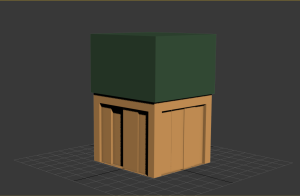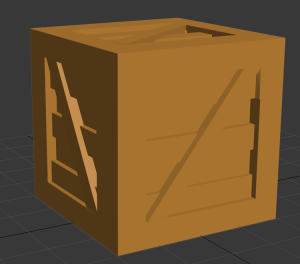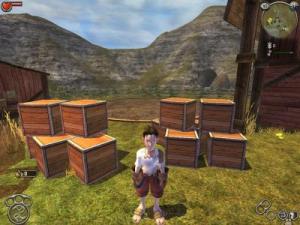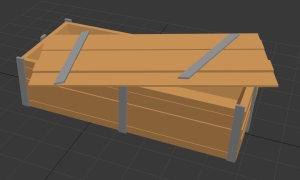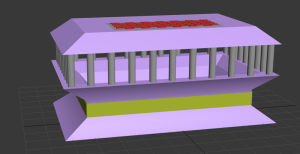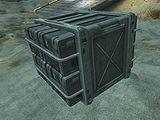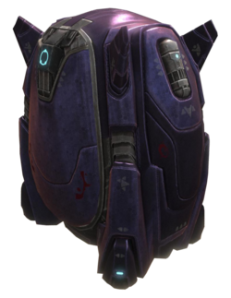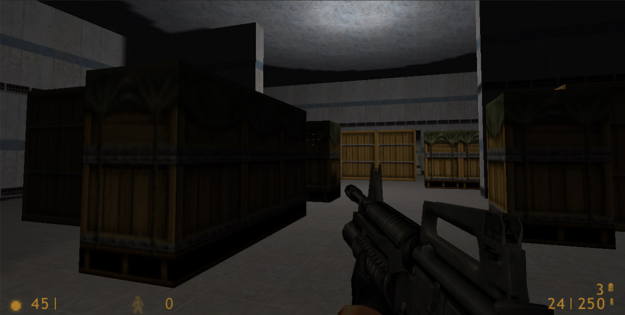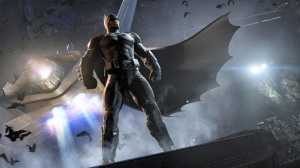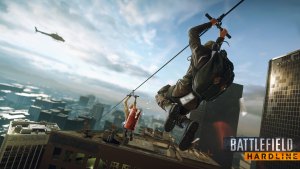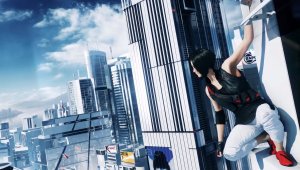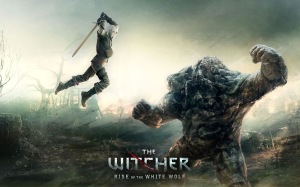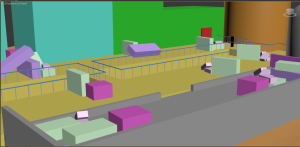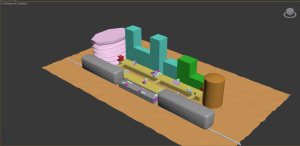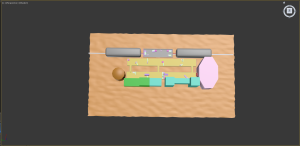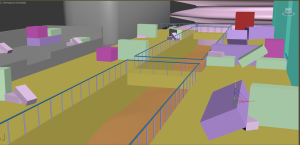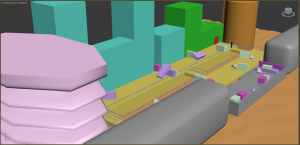The game me and my group played for this weeks assignment was Pandemic. A game for 2-4 players where you are given a role/character with different abilities that are supposed to help you save humanity. Each player is given one of the following five roles: Medic, Dispatcher, Researcher, Scientist or operations expert. The goal of the game is to avoid the extinction of mankind by not allowing more than 7 outbreaks to happen, by not allowing a disease to take hold (running out of disease cubes for any one of the 4 diseases) or running out of player cards. The only way that the players can win is by discovering the cures for all 4 diseases.
A turn consists of three ”phases”. During phase 1 the players execute their actions, each player is granted 4 actions per turn. These actions consists of: Moving to a ”connected” city, taking a shuttle flight (travel from one research station to another), placing a research station, traveling to the location displayed on one of your player cards, removing 1 disease cube, finding a cure or ”sharing knowledge”. I will explain these actions along with the objects in the game, below. During phase 2 the player draws 2 player cards. During phase 3, two infection cards are drawn and one disease cube is placed on each of the cities shown on the cards (the amount of infection cards drawn will be increased later on, I will explain this below).
Cards: There are a couple of different cards that come with the game. These are the player cards, role cards, infection cards and action cards.
The player cards have 3 versions of themselves; epidemic cards, event cards and Cure/city cards.
If an epidemic card is drawn, three things will happen. First, a card from the bottom of the ”infection card” deck is drawn, the city shown on the card receives 3 disease cubes. Secondly, the pile of discarded disease cards is picked up and shuffled to then be placed back on the top of the infection card deck. And lastly, the infection rate is increased by one. These also act as difficulty modifiers, there are three difficulties and they depend on how many epidemic cards are mixed in with the player cards.
Event cards are special action cards that can allow players to do special things, such as ”Airlift” which allows a player to pick up any player pawn, and place it in any city on the board.
The cure/city cards are colored with the same color as one of the diseases and have the name of a city within that diseases spreading zone. These are either used to find cures, to travel to the city shown on the card or to build a research station in the city shown on the card. In order to create a cure, you need 5 cards of the same color, and you need to be in a research station. You can also give these cards to another player by sharing knowledge with them, in order to do this you are required to be in the same city and it needs to be the city shown in the card that you are trying to give away.
Role cards are handed out to all the players in the beginning of the game, these tell you the special ability you have been given.
Action cards are more like cheat sheets, showing the player what he/she can do with their 4 actions.
Roles:
The Medic is given two abilities: First the power to remove all disease cubes in an area with one action. Secondly, if the cure for a disease is found, he/she can remove all disease cubes from a city without spending action points.
The Dispatcher is given the ability to move another player’s pawn to any other player pawn on the board. The dispatcher is also allowed to move other player pawns as if they were his/hers own.
The Researcher is allowed to give his player cards (”share knowledge”) without having to be in a specific city, instead, the only requirement is that he/she is located in the same city as the player that is given the card.
The Operations Expert is allowed to place down a research station anywhere he wants as long as he/she is standing in the city where they want the research station (in other words, no specific card is required anymore).
The Scientist is allowed to create a cure using only 4 of the same colored player cards instead of 5.
Some rules to keep in mind
-If a city has 3 infection cubes on it, and an infection card showing that city is drawn, instead of placing a fourth disease cube, one disease cube is placed on each city connected to that city. This is called an ”Outbreak”, after this has happened move the outbreak token up 1 number. If 8 of these occur, the game is over.
-If an epidemic card is drawn, the infection rate is increased. After a set amount of increases to the infection rate, the players will start drawing 3 infection cards after each of their turns. After increasing further, the players will have to start drawing 4 infection cards after each of their turns.
Setup
The game begins with each player being given their role cards, when this is done, three infection cards are drawn and 3 disease cubes are put down on the cities shown in the cards. After that, 3 more infection cards are drawn and 2 disease cubes are placed on each of the cities shown on the cards. Lastly, 3 more infection cards are drawn and 1 disease cube is placed on each of the cities shown on the cards.
Each player draws 2 player cards. The player pawns begin in Atlanta, where the first research station is also placed. After this the game is ready to be played.
My opinions
The core of the game revolves around using your actions wisely and cooperating with the other players in order to win, while constantly drawing infection cards that spread the diseases. The players will have to prioritize threats in order to keep humanity alive, while also trying to meet up in specific places to research the cure. This makes the game a very social experience, since it’s a cooperative game that won’t be won without talking to each other.
In order to win the game, the group needs to have good communication, planning skills and need to utilize the abilities of their roles.
I would say that the biggest strength of the game is probably how ”dramatic” the game can get. We have a couple of examples of that from the rounds that we played. We only won the game once, and even then we were probably 2-3 turns away from losing. We could no longer keep up with the spread of the infections in the last rounds since we started focusing too much on finding the last cure. The player cards would only have lasted us about 4 more turns in the end.
Two of the rounds were lost with us being only 2 turns away from finding the last cure. These rounds both became very tense since every infection card we pulled could mean the end of us. One of these rounds ended because we ran out of the black disease cubes and the other was lost because we hit 8 outbreaks.
So from what we experienced with the game, this appears to be how the usual game plays out, being close to both losing and winning when the end approaches.
The biggest weakness of the game would probably be the fact that the random elements of the game CAN break it. One example of this from when we played the game would be the round that was lost after only 2 of the players had made their first turns. We were unfortunate enough that the areas that begin with 3 and 2 disease cubes were too close to each other and after the first player had finished her turn, she pulled an epidemic card. This caused a massive chain reaction where one outbreak began and caused several other outbreaks to start, so after the first round was played, we were already in over our heads with 2 or 3 outbreaks already having occurred. As player two finished his round, he pulled an infection card with one of the cities with 3 disease cubes on it and the outbreak chain started again (only more severe this time). This resulted in us running out of black disease cubes and the game was lost.
I can’t imagine that this would happen all too often and that we were just incredibly unfortunate that round, however, since it did happen I would still count this as a weakness.
Regarding the target audience
The box of this game recommends it for people of ten years of age and up. Now, I could see this game being played by a ten year old who’s playing together with an older crowd (parents or siblings etc.), but not by a group consisting solely of ten year old kids. My reasoning for this is that the subject of the game is a little bit too serious for an audience that young but also because of the difficulty level of the game and due to the somewhat complex language on some of the cards/rules. My rating would probably be placed around 13-14 and up, not only because of the reasons I just mentioned but also because I think that a crowd of that age would end up enjoying the game a fair bit more.
Sometimes it feels like the people rating these types of games are going about it in a strange way. There is no blood involved and there are no scary elements (other than what you as a person visualize when looking at the board), so it could be seen as appropriate for that age group in that respect. The issue I have with it is that the complexity and enjoyment of the game is not always taken into consideration when the age group is decided. Also from a marketing point of view, rating a game with a lower age recommendation can be hurtful since older players might overlook those games in fear of them being too ”childish”. You can end up with a gap where people of one age group buys the game and don’t enjoy it due to it being too complex or difficult, and another age group who might have enjoyed the game (if they were to play it) overlooks it because they think they’re too old for it.
Long story short, I think that the age recommendations should better reflect the target audience instead of showing who would be ”allowed” to play the game. The first part of this bit was aimed at this specific game, the later part was just me ranting about age ratings/recommendations in general.
That would be it for this weeks board game post! Thanks for reading!


